A loss as big as all outdoors
October 17, 2013
Some people spend their lives trying to move mountains. Dave Brown was more ambitious: He devoted his life to ensuring that the mountains remain unchanged.
Brown, an historian, environmental activist and college professor who died Saturday at the age of 79 at his home in Calabasas, was remembered this week as a lifelong civic voice for the coastal trails, streams, hills and canyons in the wilderness area where he lived since 1966.
“His soul was devoted to the Central Santa Monica Mountains and the part of the Simi Hills that touches the Santa Monica Mountains,” said Paul Edelman, deputy director of natural resources and planning at the Santa Monica Mountains Conservancy, where Brown had served as a member of the advisory board since the mid-1980s.
“He was just this guardian and watchdog who would go to incredible lengths to make sure they were protected, and who cared about every major piece.”
Brown, who was born in Illinois and moved to California as a graduate student in the late 1950s, taught history and political science for more than 40 years at Los Angeles Valley College in Van Nuys, but was also known locally for his passionate efforts, starting in the 1970s and early 1980s, to halt development in the pristine mountains.
Working determinedly within the local environmental movement, Brown contributed to the preservation of tens of thousands of acres. He was one of a number of local influencers who helped stop the development of King Gillette Ranch, which had been slated to become part of a Soka University expansion; now the ranch hosts the Visitor’s Center of the Santa Monica Mountains National Recreation Area. His advocacy also helped save or create such important wilderness landmarks as Malibu Creek State Park, the Zev Yaroslavsky Las Virgenes Highlands Park and the Backbone Trail.
Over time, he became sought after as an informed and pragmatic voice on local land use issues, and he served on the city of Calabasas’ Planning Commission for several decades, winning national recognition for his civic contributions. He also devoted countless hours to the Sierra Club, the Audubon Society, the Malibu Creek State Park Docents and other environmental organizations. (To catch a moment of a Brown-led tour of the park several years ago, click here.)
“He was an incredible, encyclopedic resource,” said Kim Lamorie, who knew him as a 35-year member of the Las Virgenes Homeowners Federation, of which Lamorie is president.
“He knew all the properties, he knew all the trees, he knew every ridgeline. And he was a master mapper. He had more maps than anyone I’ve ever known.”
“He was a big man with a big hat and a big voice, and he spoke with a lot of authority,” said John Suwara, a friend and neighbor of nearly four decades. “Dave was a realist, but he fought tooth and nail, right up to the end.
“Even as recently as March, he was going to Planning Commission meetings and reviewing documents. That was maybe the biggest thing about him—he did it day after day, year after year, decade after decade. He wasn’t one of these people who are there one day and gone the next.”
In fact, Edelman said, because of Brown’s longevity and commitment, there are now spots in the Santa Monica Mountains in which every visible piece of the wilderness, all the way to the horizon, is arguably there, at least in part, because of him.
“There’s one overlook on Piuma Road,” he said, “where everything you see is something he had an absolute hand in, from the valley bottom to the ridge lines.”
And then there is the matter of how the mountains shaped Brown’s life and outlook.
Last year, after the majestic, 200-acre Firehouse Hill—now the Zev Yaroslavsky Las Virgenes Highlands Park—was saved from development in Calabasas, Brown, by then in frail health, stood among its oaks and considered what the place meant to him.
“I sometimes sort of tell myself that if the Lord should see fit to send me upstairs instead of downstairs,” he said, “I would expect that I would walk up to heaven through a place like this.”
Posted 10/17/13
Market’s got a brand new bag
October 15, 2013
Attention, Grand Park shoppers: plastic bags are no longer on the menu at your weekly farmer’s market.
On Tuesday, merchants started handing out paper bags with purchases, and park employees distributed more than a hundred free, reusable tote bags to shoppers who agreed to fill out a short, six-item questionnaire about their market experience.
“We ran out in the first two hours,” said Karen Tran, one of two workers handing out the totes.
The market’s manager, Susan Hutchinson, said some merchants had initially expressed concerns that paper bags would be more expensive than plastic and would not hold up as well to potentially messy items, like ripe peaches and plums.
Both fears proved to be unfounded when vendors transitioned from Styrofoam clamshell containers to cardboard, and she expects an equally smooth transition to the new bags, which are required under county law and will be mandated by the city as well beginning Jan. 1, Hutchinson said.
“The reality is it’s not such a big deal,” Hutchinson said. “People adapt.” She’s hoping that customers’ adaptation will include remembering to bring their own reusable bags to the market, which runs from 10 a.m. to 2 p.m. on Tuesdays.
On Day 1, the lunch time crowd seemed to welcome the change.
“I think it’s great,” said county employee Nyla Jefferson, carrying two paper bags loaded with apples, peaches, plums and blueberries.
LAPD Detective Ron Walker held one of the free tote bags as he waited for his apple feta salad to be prepared. He said he was glad to see the bag policy change.
“Even supermarkets are charging for bags now,” he said.
Posted 10/15/13
After a short stall, budget passes
October 9, 2013
The Los Angeles County Board of Supervisors on Tuesday gave final approval to a budget that reflects improving revenues from a rebounding economy, along with urgent new demands on those funds for jail reform, improvements in the child welfare system and other looming needs.
But getting there wasn’t easy. A short-lived—though potentially damaging—budget standoff temporarily stopped the process in its tracks and drew comparisons to the ongoing showdown in Washington D.C. before it was resolved.
It was the first time in memory that the usually routine action of recognizing supplemental revenue in the county budget had been derailed in such a manner, if even for a brief period.
The $362.4 million being transferred in this year’s supplemental budget process was intended to fund a variety of county initiatives—from implementing recommendations by the Citizens’ Commission on Jail Violence to hiring 147 additional children’s social workers to enhancing contract monitoring of foster family agencies and group homes. With property and sales tax revenues on the upswing and an infusion of funds following the state’s disbanding of redevelopment agencies, there was also money for maintenance and capital projects that had been deferred during the lean days of the Great Recession.
Tuesday’s standoff started when Supervisor Mark Ridley-Thomas balked at placing two chunks of the supplemental revenue—totaling $55 million and $20 million—into the county’s extraordinary maintenance and capital project budgets, respectively.
Instead, he argued, the funds should go into the county’s rainy day fund to cover unexpected needs that may crop up. That fund, as of Tuesday, had just over $232 million in it.
Ridley-Thomas’ motion, opposed by Supervisors Don Knabe, Gloria Molina and Zev Yaroslavsky, drew the support of Supervisor Michael D. Antonovich—and that was enough to deprive the supplemental budget item of the 4-vote super-majority needed for passage.
“It’s just like the feds. We have no budget,” Molina said incredulously.
Yaroslavsky said the 11th hour hitch in the budget process was “a Tea Party-esque kind of thing.”
The development came hours into a marathon meeting at which the eventual passage of the supplemental budget—the last step in approving the county’s official spending plan for fiscal 2013-14—had seemed assured. The stalemate was broken a short time later, when Antonovich moved reconsideration of the item.
Antonovich suggested that the two pots of money—the $55 million and $20 million—be combined in the CEO’s budget to address either capital projects or extraordinary maintenance needs in this fiscal year.
That proposal passed unanimously, and the county’s supplemental budget was approved, largely in the same form originally recommended by Chief Executive Officer William T Fujioka.
After the reversal, Yaroslavsky called the whole episode “a bizarre way to do business.”
“It was disconcerting but I suppose one could say, to quote Churchill, ‘Democracy eventually does the right thing, but only after exhausting all the alternatives.’ ”
Posted 10/9/13
‘Healthy’ shortcut to medical care
October 9, 2013
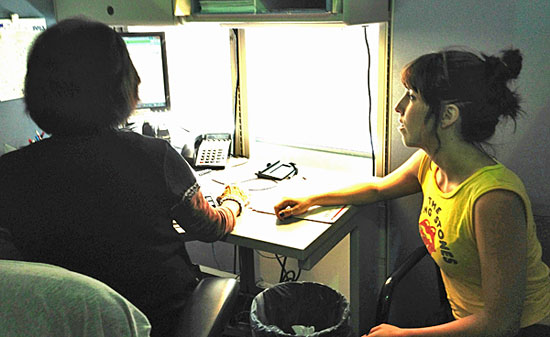
Patient Beth Goodfellow likes the Affordable Care Act, but for now, she’s relying on Healthy Way L.A.
As Californians rushed to sign up for coverage under the Affordable Care Act last week, Beth Goodfellow sat on the sidelines, too sick to join in.
A 28-year-old rock musician newly arrived in Atwater Village from San Francisco, she had planned to wait until her gigs picked up and then shop on the new state exchange for health insurance. But when a pain in her side wouldn’t go away, she found herself at the county’s Mid-Valley Comprehensive Health Care Center, unable to wait until 2014, when the Affordable Care Act kicks in in earnest.
The county’s Rx?
A primary care doctor at the Van Nuys center, and enrollment—right now—in Healthy Way L.A.
As the next phase of healthcare reform approaches a January deadline, Los Angeles County has been busily bridging the gap with its own interim program to channel the uninsured toward coverage.
Come 2014, all Americans will be required to have some form of health insurance, whether via an employer, a private purchase or the government—Medicare or Medicaid, for example.
To ease the shift, that mandate will come not only with subsidized state exchanges like the ones that opened last week to make it easier and cheaper to buy private insurance, but also with a massive expansion of the federal government’s Medicaid program for low-income patients, (or Medi-Cal, as it is known in this state).
While computer glitches with the exchanges have drawn widespread attention nationwide in the past week, Los Angeles County has continued to power ahead with a related effort: enrolling as many eligible uninsured patients as possible in a local program called Healthy Way L.A.
Created in 2007, Healthy Way L.A. isn’t technically health insurance and, except for emergency services, doesn’t cover members outside Los Angeles County. But it does offer free, publicly funded health care to the kinds of patients who mostly end up being treated by the county and community clinics—those who can’t afford private insurance, or whose jobs don’t include it.
The program covers legal residents aged 19 to 64 who earn too much to qualify for Medi-Cal right now and still make less than 133% of the federal poverty level (less than about $1,274 monthly for one person). Because all of those patients will become eligible for government-subsidized insurance under the terms of next year’s expansion, health officials are viewing Healthy Way L.A. as a quick and easy steppingstone to the new, more broad-based version of Medi-Cal.
Thousands of uninsured patients have been registered for Healthy Way L.A. at health fairs, county hospitals and health care centers and community clinics, and, as January approaches, the county has moved aggressively.
Dr. Mitchell Katz, director of the county’s Department of Health Services, told the Board of Supervisors on Tuesday that the county is well on its way toward reaching its goal of 300,000 sign-ups for the program.
Sheryl Spiller, head of the county’s Department of Public Social Services, which is playing a central role in registering people for the program, told supervisors that 275,000 already have been signed up.
“Things are moving along and we’re ready,” Spiller said.
The stakes are high, both for patients and the county.
Giving patients a fast track to insurance gets them accustomed to regular checkups at a regular location. That, in turn, helps keep them healthier and holds down healthcare costs by preventing expensive emergency room visits.
But another reason for the push is that the county wants these patients. When the Healthy Way L.A. clients transition to Medi-Cal, the federal government will begin picking up all or most of the cost of their healthcare—a tab that the county is helping to pick up currently.
Moreover, even with the Affordable Care Act, the county will remain the provider of last resort for some 400,000 undocumented residents and others who will remain ineligible for any insurance. The county will need as many covered patients as possible to stay financially afloat
So with only a couple months until January, the county is pulling out all the stops to get future Medi-Cal recipients into the pipeline.
“It’s crunch time,” said Deedra Williams, public information officer for ambulatory care at the Department of Health Services. “It’s all hands on deck right now.”
Goodfellow, the rock musician, was one of 38 new clients signed up on a single morning last week at the healthcare center in Van Nuys.
And there as elsewhere, officials say the county has been working on its bedside manner, because under Medi-Cal, the Healthy Way L.A. clients who now get their care from county doctors and community partners will be able to shop around for healthcare.
“We’ve been serving this population for two years now, but we’re focusing on making sure that we provide quality care and good customer service,” said Tangerine Brigham, DHS deputy director of managed care services.
DHS officials say the department has been working with Spanish-language television stations to get the word out, and last week, DHS rolled out a new, much more user-friendly web site. And at Mid-Valley, Associate Administrator Linda Kim-Fung said staffers last year underwent intensive customer service training.
“We’re trying to educate our staff to go out of their way to be friendly,” Kim-Fung said. “You know—the customer comes first, be friendly, ask if there’s anything else.”
That’s a good thing, said 52-year-old Ben Ahmadi, an uninsured grocery clerk with diabetes who was renewing his Healthy Way L.A. enrollment.
“There’s nothing wrong with the doctors here,” he said. But, he added, the county system will have its work cut out for it if it wants to compete with established managed health care juggernauts such as Kaiser Permanente, where he once had insurance.
“When I used to have Kaiser, you’d go in and make an appointment and you’d be in there in around 15 minutes,” he said.
Goodfellow said she’s grateful that Healthy Way L.A. was there to cover her in the short term. In San Francisco, she said, she used a similar county health access program and was pleasantly surprised at the quality of care.
“I’m pretty young, so I just tend to go to the doctor when I don’t feel well,” she said. “But I think Obamacare is a really good idea and I’m happy we’re coming closer to having health care for everyone.”
Posted 10/8/13
Grand Park comes of age
October 3, 2013
They built it. And they came.
This week marks the one-year anniversary of downtown’s Grand Park, a four-block expanse that has provided a jolt to Los Angeles’ Civic Center for reasons well beyond its hot-pink furniture.
Since its dedication last October, the 12-acre park between the Music Center and City Hall has drawn tens of thousands visitors for events big and small, from a Fourth of July extravaganza to daily yoga classes. Although the big-city development around it continues to be vigorously debated, the park itself has proven to be an intimately scaled magnet for families and children. The “splash pad” at the Arthur J. Will Memorial Fountain, in particular, has drawn knee-high youngsters and their parents from across the region.
“It’s just as serene and beautiful as I expected,” said Kesha Barkulis, who, on a recent and sparkling autumn weekday, was following her drenched and teetering 9-month-old daughter, Luna, as she navigated the 79 gentle water jets of the fountain.
It was their first visit to Grand Park, one that Barkulis said she’d wanted to make all summer, ever since reading about the ¼-inch-deep pool on a website aimed at moms seeking kid-friendly outings. They had taken the Red Line subway from North Hollywood to the Civic Center station, located just steps away from the fountain, which has become a popular venue for toddler birthday parties now.
For decades, the area formerly known as the “Civic Center Mall” was largely hidden by concrete parking ramps and two blockish government buildings—the Superior Court and Los Angeles County Hall of Administration. As a result, the mall and its 1960s-era fountain ended up being used mostly as an outdoor break area for bureaucrats and jurors.
But after a $56-million privately-financed makeover, which was required as part of the approval process for commercial development along Grand Avenue, the park is now generating crowds—and buzz—through a mix of programming experiments overseen by the Music Center.
The Fourth of July event, for example, drew an estimated 10,000 people, according to Grand Park Programming Director Julia Diamond. Thousands of people, she said, also have shown up for dance events and a movie series featuring such family fare as “ET” and “The Never Ending Story.” Last Sunday, 2,000 music fans gathered on a Grand Park lawn to watch the first simulcast of a Walt Disney Concert Hall performance, which featured jazz great Herbie Hancock.
Not bad for Year One.
“People think of Angelenos as wanting to celebrate privately,” Diamond said. “But people in L.A. are game for sharing.”
The park, which she called a “cultural and civic space with no walls,” has tapped into that growing hunger for collective experiences, exemplified by the widely popular CicLAvia events.
One key to the park’s early success, Diamond said, is that thousands of people in offices and lofts downtown “have actually shown a large appetite for diversion and entertainment in the middle of the day, uniting around something that speaks to a part of themselves outside of their work lives.” Besides lunchtime yoga and informational fairs on such topics as green transportation and public health, the mid-day programming has included a weekly farmer’s market and concerts ranging from Latin jazz to classical music to pop.
Diamond said she’s also been struck by the ethnic and economic diversity of the visitors—a result, she suggested, of having a park without a strong neighborhood history or existing identity. “This gives the park a lot of freedom to be whatever people want it to be,” she said.
Still, not everything’s gone as the programmers had hoped. One of the biggest first-year challenges, Diamond said, has been to get the downtown workers to become an after-hours crowd. “They get into their cars and drive away,” she said, adding: “If you gave people a reason to stay, they would. We haven’t found that reason yet.” (One possible reason: Grand Park’s official 1st birthday bash, which takes place from 7 p.m.-10 p.m. on Thursday, Oct. 10, and features free entertainment on the Performance Lawn.)
Diamond said Grand Park programmers and marketers also have been stymied by the nature of downtown itself, which she described as “sort of like the Balkans.” The farther away from Grand Park people work, such as in the Bunker Hill area, the harder they are to engage. Downtowners, she said, “tend to stay in their micro-community.”
Diamond’s anniversary wish for the next year?
“I want everyone in Los Angeles to know about Grand Park,” she declared. “A year ago, we didn’t exist. I want that name to have instant recognition as an amazing place.”
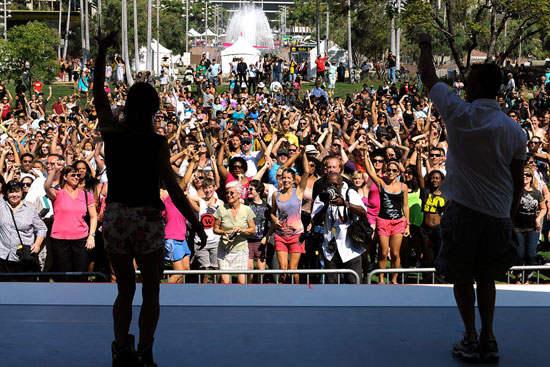
Grand Park's music events have proven particularly successful in drawing crowds during the first year.
Posted 10/3/13





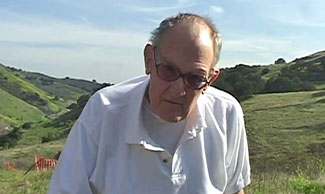

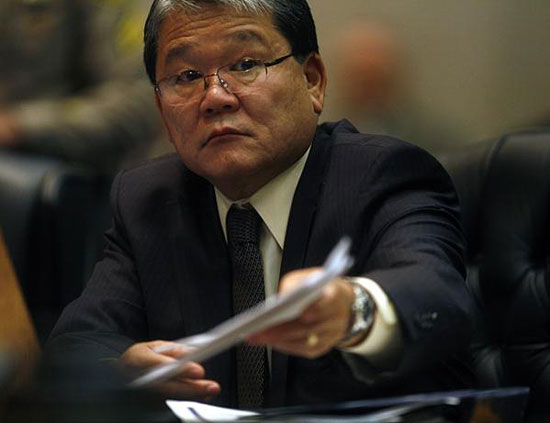
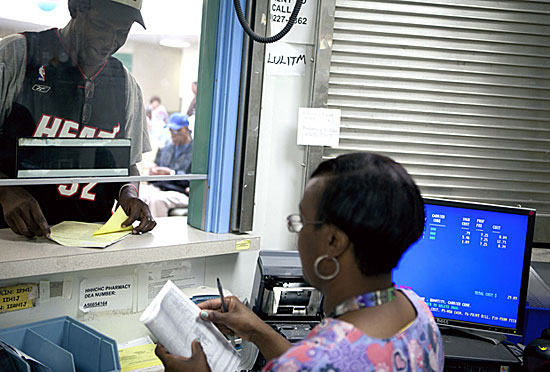







 Check for the latest closure information
Check for the latest closure information








